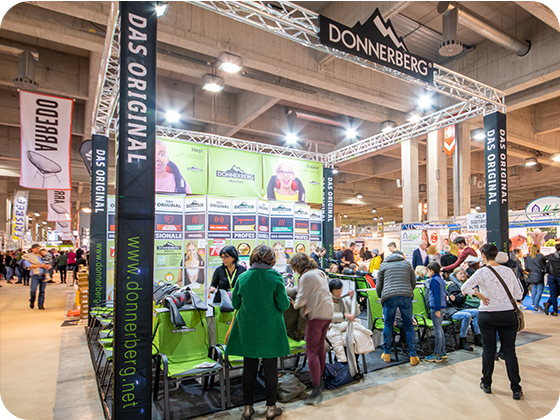The importance of ecology and proper e-waste management is an issue that each and every one of us has to be aware of. We are witnessing large-scale production of goods around the world, and recycling, in most cases, does not follow this trend.
In recent years, a large number of electronic devices with significantly reduced lifespan have been in the focus of attention. Devices that have been repaired once and which are now mostly replaced are a part of everyday life in most households.
This current situation raises the question of where and how electronic waste can be disposed of. Proper waste management important issue that is the responsibility not only of the competent authorities, but also of the citizens themselves.
Who is responsible for the return and storage of old devices?
In Germany, around two tons of high-tech waste is accumulated every year. About 40 percent is properly treated, and the law itself indicates that 65 percent of high tech must be properly treated. In order to foster proper disposal of electronic waste, there are other waste disposal streams in addition to the designated municipal collection points. From 24th April 2016 larger manufacturing companies are obliged to return used devices. In this way, the end user is motivated to manage waste properly by speeding up the recycling processes.
The return obligation also applies to shops with high-tech products with sales area greater than 400 m2 and supermarkets of at least 800 m2. Supermarkets have to meet this obligation if they stock some of these products several times a year or in continuity.
If the sellers have a storage and distribution area greater than 800 m2 for electronic devices, they are obliged, at the request of each consumer, to pick up and transport a specific device within a reasonable distance free of charge.
In any case, the municipalities also offer the possibility of waste disposal directly in recycling depots. The return of old devices is free of charge in this case, but collection from the residential address may be subject to a charge.

Relationship between end users and electronic waste collection points
Every consumer is given the opportunity to return the old device if he/she buys a new one. An electrical device with over 25 cm outer edge length can be handed in at the collection point after the consumer purchases a new device. A prerequisite is that the manufacturer and distributor of electronic devices has established cooperation with collection points. Devices with an edge width of more than 25 cm can be returned after purchasing similar devices from the manufacturers. In this case, a proof of purchase has to be provided.
If you decide to hand in your old electrical or electronic equipment, you can find out more about this topic at https://www.take-e-back.de/Verwachsener-Ruecknahmestellen-machen. Before accessing the link, it is important to know that your devices will be accepted at those collection points in your area.
Legislation and e-waste management
All devices that rely on electric energy can be classified as waste and fall under the “Electrical and Electronic Equipment Act (ElektroG)”. Some of the new products included in this law are night storage heaters. It’s important to note that they contain asbestos, a potentially toxic silicon mineral that requires professional handling and storage. Such heaters can be handed in at public collection points or employees can be notified prior to collection. Some of the new products included in this law are night storage heaters. It’s important to note that they contain asbestos, a potentially toxic silicon mineral that requires professional handling and storage. Such heaters can be handed in at public collection points or employees can be notified prior to collection.
An interesting fact is that from 15th August 2018 onwards electronic products are considered to be all products that contain an integrated electrical or electronic component. A real example of these are sneakers with luminous soles and backpacks with integrated lights.
Using the above mentioned items as an example, it can be determined whether the entire product or only a part of it is considered to be e-waste. If the electronic component is firmly connected and there is no possibility of separating it without high resistance, the product should end up in the collection centre. Even if the object can be used after the electronic component malfunctions, as is the case with luminous sneakers, it is perfectly acceptable to remove it.
On the other hand, it is possible to remove the electrical part or replace defective parts in certain products. A good example is a dressing table mirror which contains an easily replaceable battery, or dynamos on the bicycle. In these cases, the electricity shares comply with the legal requirements and should be disposed of.

E-waste mismanagement means facing an environmental problem
As already mentioned, more than half of the devices in Germany are not recycled. From an economic and ecological point of view, which means an irreversible loss of valuable and consumable metals. What’s more, poor waste management is posing a serious threat to the environment.
Many high-tech devices contain heavy metals such as lead, mercury and cadmium. It is well-known that such elements can be disastrous for the entire ecosystem if not managed properly. In contrast, electronic devices contain the most valuable metals on the market, platinum and gold, as well as copper. Additionally, countless plastic compounds are available. In order to comply with the law, it is necessary to recycle four-fifths of electronic waste.
In addition to having negative effects on the environment, irresponsible disposal of old devices can endanger the health of the population. In addition, electronic waste is illegally exported to developing countries in Asia and Africa. As a consequence, children in these countries are often exposed to hazardous effects of contraband. In order to extract raw materials from old devices, such as extracting copper from plastic cables, people and their children resort to primitive methods that in many cases lead to contamination of water, soil and air.

Get your devices repaired instead of buying new ones
Soaring e-waste is an issue that we will have to address seriously in the future. Literally every month we witness the release of new cell phones, upgraded hand blenders, new graphics cards for gaming, etc.
In conclusion, only a defective device means waste. Even a minor defect does not mean that a repair is no longer an option.
Give your old childhood cassette player new life. Visit local workshops, you’ll be surprised to see there are always plenty more of them.
- E-waste management in the UK owners of old devices from private households can dispose these at the public waste disposal authorities or bring them to producer or seller related disposal locations. You can find these disposal locations online: http://www.recycle-more.co.uk
References:
https://www.gov.uk/guidance/regulations-waste-electrical-and-electronic-equipment
http://www.niassembly.gov.uk/globalassets/documents/raise/publications/2016-2021/2017/aera/1117.pdf









